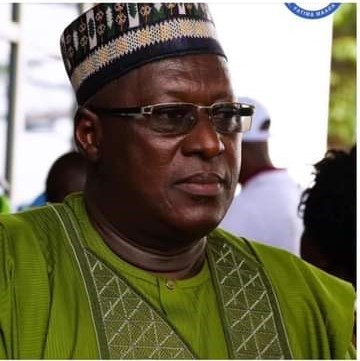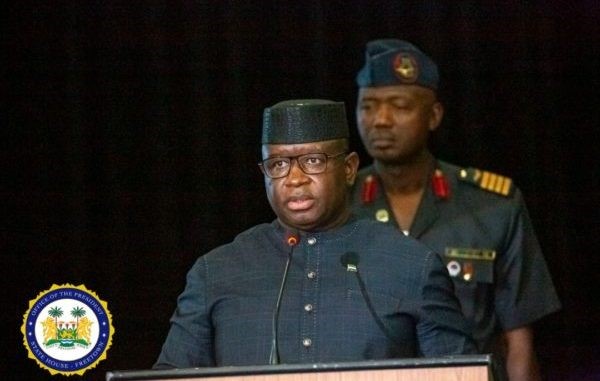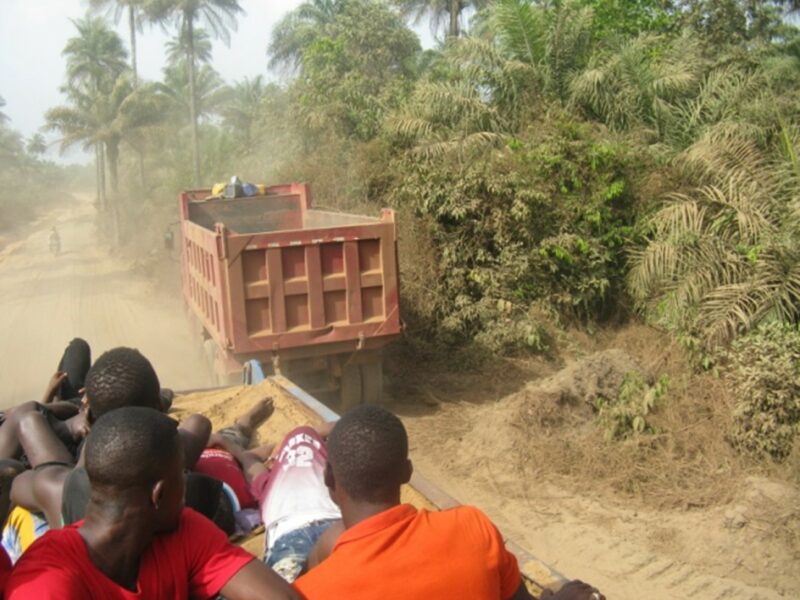Five Years of Infrastructural Transformation
When he sought the mandate of the electorate while on the campaign trail in 2007, the All Peoples Congress (APC) leader and presidential candidate for the approaching November 2012 elections, President Dr. Ernest Bai Koroma registered his full commitment and determination, as he made it abundantly clear that his presidency will make a difference if given the responsibility to govern Sierra Leone, which he has already manifested as we rapidly approach the end of his first term in office.
In Sierra Leone, it has been no secret that the country suffered hugely from infrastructural underdevelopment during the civil conflict, as great deal of damages were done to the country’s archaic infrastructure bequeathed to us by our British colonial masters. Not until when the well focused President Koroma came in 2007 and decided to give a real new look to the face of Sierra Leone, with improvement in the areas of roads, housing and government offices across the board within the last five years. As stated by the African Development Bank in one of its recent reports, Sierra Leone’s infrastructure remains grossly inadequate after the war. Nevertheless, the housing, roads and other infrastructural situational trend has dramatically changed as Sierra Leone is currently witnessing significant transformation and reforms in every spectrum of governance since September 17th 2007 when President Koroma took up office as a Head of State to date, under the flagship programmes of the ‘Agenda for Change’, which has paved ways for balance developmental projects in the post-conflict West African state.
These vital inroads through his nation building initiative have brought us more global recognition with respectability as a country. And it all started with the relentless moves of the President to ensure that Sierra Leoneans, irrespective of your regional, tribal and political affiliations should be able to serve the state in conducive working environments, which is why the government of President Koroma has taken infrastructural development as one of the major priorities of the ‘Agenda for Change’.
Infrastructural development within the last five years in Sierra Leone has so far made remarkable progress in terms of the erection of new structures and refurbishing old ones that were deliberately ignored by the Sierra Leone People’s Party (SLPP) former president Alhaji Ahmed Tejan Kabba (h) led regime, from Freetown right across the country.
This rapid pace of infrastructural development has been clearly manifested through efforts made by President Koroma in the balanced construction of feeder and trunk roads within the country and he does not only stop at doing the roads, but has also come this far in rebuilding dilapidated government offices everywhere in the country, through his government’s infrastructural strides.
Ranging from the provision of a nationwide free health care delivery service infrastructure with medical stores in every districts, Agricultural Business Centres in all one hundred and forty-nine chiefdoms, the Anti-Corruption Commission offices in Makeni, Bo and Kenema, the newly built Ministry of Foreign Affairs and International Cooperation office at Tower Hill, done by the government of the People’s Republic of China, in partnership with government of Sierra Leone, the Office of National Security and the rehabilitation of the House of Parliament, that now enable our Members of Parliament to get a perfect seating accommodation and carry their parliamentary debates on imperative national issues, at all the apex of Tower Hill overlooking a renewed Freetown city, and the headquarter of the National Electoral Commission.
Also, on the long list of infrastructural achievements made by the government of President Koroma, within the period under review, that is further to beautifying the country, is the ongoing construction of the Bo Municipal Stadium by the government of the People’s Republic of Chinese in cooperation with the government, the Children’s Hospital in Bo, the ongoing construction of multi-complex shopping malls and public transport terminals in Bo, Kenema, Makeni and not to talk of the newly built infamous Kailahun Court Barry in Kailahun. Another significant milestone developmental move that have been undertaken by the government of President Koroma is the rehabilitation of the Freetown International Airport which now provides a watertight security system and sniffer dogs that always roam around to help with checking for the prevention of trafficking illegal drugs and arms and ammunitions.
Moreover, as for the area of empowering fishing communities in the country, President Koroma’s government through the Ministry of Fisheries and Marine Resources, in partnership with the European Union has put up fish landing jetties at Tombo, Kychom and Kassarie in Samu chiefdom, Kambai district, Cape Light House via Coffee Warf Aberdeen, Freetown, Banana and Plantain Islands, Gbondapi and Shenge, Moyamba district as well as other places, where fishermen are making very good use of these facilities.
Apart from these, since the implementation of the free health care policy for breastfeeding mothers, pregnant women and under fives, government has adequately upgraded health care delivery and medical infrastructure in all districts with ultra-modern equipment that now enable the sector’s nurses and doctors to carry out health service delivery successfully and professionally, while plans are already underway for the construction of paediatric and maternal health centres in the country.
However, health care delivery infrastructures that were targeted in the last five years under the leadership of President Koroma, with abundant drugs for the targeted beneficiaries have drastically reduced what used to be the high rate of death of pregnant women and under five children.
As it can hardly be talked about without making measure of shelter, the National Social Security and Insurance Trust (NASSIT) Housing Scheme which has also made a fundamental contribution towards the President’s infrastructural drive, as it is presently providing affordable housing facilities for Sierra Leoneans.
In places such as Bandajuma, Bo district, Kambuwabu in Kenema, Mena Hills in Bombali district, Waterloo in the Western Area and Angola Town in Freetown Peninsular, the NASSIT housing scheme has offered standard modern housing facilities, meant for the provision of average lodging in order to further enhance provincial accommodation as the lack of such facilities have been posing serious problems for the people, particularly so when many people were rendered homeless by the war. By every indication, the infrastructural development that is being undertaken by this government under the committed leadership of President Koroma has opened so many doors for Sierra Leone’s national growth in the areas of direct foreign investment, as it is currently evidence in the presence of companies that are now adding real value to our country’s natural resources. It has also raise awareness among Sierra Leoneans to put on their thinking caps and support national development for internal integration and stability, while the country is set to maximize gains and it has even gone that far in addressing the problem of unemployment and has considerably reduced food insecurity in Sierra Leone. Above all, the outlook of Sierra Leone’s infrastructural development within the last five years has penetrated social and economic services into the hinterland.
So country folks from the four corners of the nation, let us all wait and see what President Koroma’s second coming and the ‘Agenda for Prosperity’ hold in store for us all, as we have seen, read and heard of what the ‘Agenda for Change’ has done for the land that we love.
By Joseph Kamanda
Stay with Sierra Express Media, for your trusted place in news!
© 2012, https:. All rights reserved.








